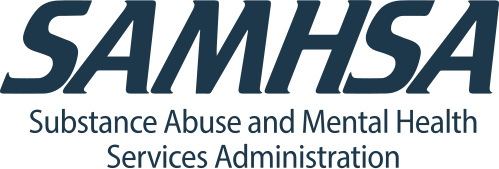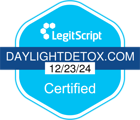The sound of glasses clinking together. The smell of alcohol on your sister’s breath. Eating Thanksgiving dinner. Walking into a restaurant you haven’t visited in a long time. Alcohol cravings can happen at any time – day or night. Whether you’re expecting it or not, it’s important to identify the triggers that are causing your cravings. Sometimes, identifying and overcoming those triggers may feel like the end of the world – but Daylight Recovery Center is here to help. And good news: urges/cravings to drink are short (they typically go away within fifteen to twenty minutes), predictable, and controllable – with the right tools. Here are the facts you need to know about alcohol cravings, and how you can beat them.
What is a “craving” or “urge”?
According to a study done by Nature Reviews Neuroscience, a major problem in overcoming drug addiction is the craving that is induced by cues and contexts associated with drug-taking, as this can lead to relapse. Cravings are response patterns that are programmed in people and appear as a result of environmental conditions, changes in mood, stress, or other types of triggers that prime these response patterns. If you want a visual of what cravings are like, imagine a game of tug of war. On one side, a part of you wants to stop drinking and stay sober and on the other side, a part of you wants to feel alcohol’s pleasurable effects.
Alcohol cravings are usually strongest in early recovery and tend to decrease over time. Some recovering alcoholics have cravings that occur within the first year and never happen again, while other recovering alcoholics have random cravings for a couple years into recovery. Alcohol cravings are a unique experience for each individual and will depend on many factors. Although cravings may sometimes seem to appear out of nowhere, they are most often triggered by something. This can be an environmental situation, feeling, or memory that one has about former alcohol abuse.
There are two types of triggers, external and internal:
- External triggers are people, places, and things that are associated with your alcohol addiction. These “high-risk situations” are more obvious, predictable, and avoidable than internal triggers. Many recovery centers/recovery groups recommend that you avoid external triggers when going through recovery.
- Internal triggers can catch you off guard because the urge to drink seems to “pop up” out of nowhere. But, when pausing and thinking about the moment, you’ll usually find that the urge may have been set off by a certain thought, a positive emotion such as happiness, negative emotion such as doubt, or a physical sensation such as a migraine, tension, or nervousness.
Alcohol is the most widely abused substance in the United States and more than three-fourths of those who enter a substance abuse rehabilitation program cite alcohol as either a primary, secondary or tertiary source of addiction. Understanding what’s happening in your brain when you drink alcohol is the first step in understanding how to beat those triggers, and thrive during the recovery process.
The science behind alcohol addiction
We all know that alcohol is a drug and when a drug enters your body, it disrupts your natural state. But, why is it that some people can drink alcohol and not become addicted while others become alcoholics? This has to do with a combination of genetic, physiological, and social factors:
- Genes may trigger the development of alcoholism. Research has shown that children of alcoholics are four times more likely to become alcoholics themselves.
- Physiologically, alcohol changes the balance of chemicals in the brain. It affects the brain’s reward center, such as dopamine. This motivates you to engage in the behavior again and again, chasing that same feeling.
- Social factors, like peer pressure and advertising play a role in the development of alcoholism. Teenagers usually start drinking because they see/hear their friends are doing so. Many people also see drinkers on television/in movies looking glamorous and exciting.
Most of us have witnessed the outward signs of alcohol use (stumbling while walking, slurring words while having a conversation, and memory lapses after drinking). These things happen because of the way alcohol affects the brain and central nervous system.
Which regions of the brain are affected the most?
- Cerebral cortex: The cerebral cortex is the largest site of neural integration in the central nervous system. In this area, thought processing and consciousness are centered. Alcohol slows down this area, leading to potential poor judgement. As the blood alcohol content increases, these effects will get more pronounced.
- Cerebellum: The cerebellum is responsible for coordination, thoughts, and awareness. A person may have trouble with these skills after drinking alcohol. A person’s hands may shake, they may lose balance and fall, or stagger. This is one of the reasons that driving after drinking alcohol is extremely dangerous.
- Hypothalamus: The hypothalamus is the part of the brain that does the body’s “housekeeping chores”. After a person drinks alcohol, blood pressure, hunger, thirst, and the urge to urinate increase while body temperature and heart rate decrease.
- Medulla: The medulla controls the body’s automatic functions, such as a person’s heartbeat, breathing, consciousness, and body temperature. Alcohol induces sleepiness, and may dangerously slow breathing.
Long-term drinking can also leave permanent damage on your body, including causing your brain to shrink. How long you’ve been drinking, how often you drink, where you drink, what industry you work in, and who you drink with all affect your body’s reaction, your drinking behaviors, and your needs in recovery.
So, now that you know the basics of alcohol addiction: what are some things you can do to beat your cravings/urges?
How to Beating Alcohol Cravings
When confronting your cravings head-on, you may feel like you’re at a disadvantage. Many addicts question if they have cravings because they’re weak. We are here to tell you that that is not the case. It’s important to remember that alcohol addiction can be an incredibly powerful force, requiring a great deal of effort to effectively manage. These strategies can help you cope with cravings:
- Remember that they are short-lived. As mentioned earlier in this blog post, cravings will usually only last fifteen to twenty minutes. Take it minute by minute, remembering that it will go away in a short amount of time.
- Keep yourself distracted. You may find that your cravings happen when you’re not busy. You may have subconsciously associated drinking with boredom before recovery. If you have a sponsor, calling or texting them could help. You can also exercise, meditatie, do something creative (like writing or painting), or socialize with friends. Distractions are excellent ways to deal with cravings. It’s important to start to find enjoyment in activities that don’t involve drinking.
- Practice mindfulness. Mindfulness will help you become aware of what is happening. You will become aware of your unhealthy impulses, without engaging in them. The practice encourages you to simply notice your craving to drink, without feeling that you have to satisfy that craving/urge.
- Ride out the wave. As Rethinking Drinking suggests, imagine your cravings as a wave. Ride it out without giving in. Instead of fighting an urge, accept it as normal and temporary. As you ride it out, keep in mind that it will soon crest like an ocean wave and pass.
- Work with a trained counselor/therapist. By working with a professional, you can figure out the root problem and help heal any past trauma that may have contributed to your addiction. Cognitive-behavioral therapy (CBT) focuses on identifying maladaptive behaviors and helps you develop new coping skills to better maintain sobriety and avoid relapse.
- Join a sober social network. Whether you join AA (Alcoholics Anonymous) or you become friends with other sober people in your school/workplace, teaming up is beneficial. It’s important to have sober people around you who will support your recovery and not hinder it.
- Medications may help. With the guidance of a recovery specialist, you may find that medication will help stop or shorten your cravings. Right now, there are three medications that are FDA-approved for the treatment of alcohol use disorder.
- Create coping flashcards. This set of cards should have actions to take during a craving. This can include statements like “Just remember, this will pass” or “You can get through this”. You can also write down why you want to stay sober, the goals you have, and the coping skills that you have found work for you. These cards will help you think before you act.
It may also be helpful to record the cravings you experience in a journal to keep track of where and when they occur. This will help you see any patterns and increase your awareness.
Are You Ready for Help to Beat Alcohol Cravings?
Remember that recovery isn’t linear. The process isn’t the same for everyone. Some people may experience cravings for a short amount of time while others experience cravings for years. But, no matter how long your cravings go on for, we are here to tell you that you CAN and will recover. Recovery may be challenging and hard, but it is possible.
If you need help, Daylight Recovery Center is here for you. Our recovery specialists are standing by 24/7 to help you.



